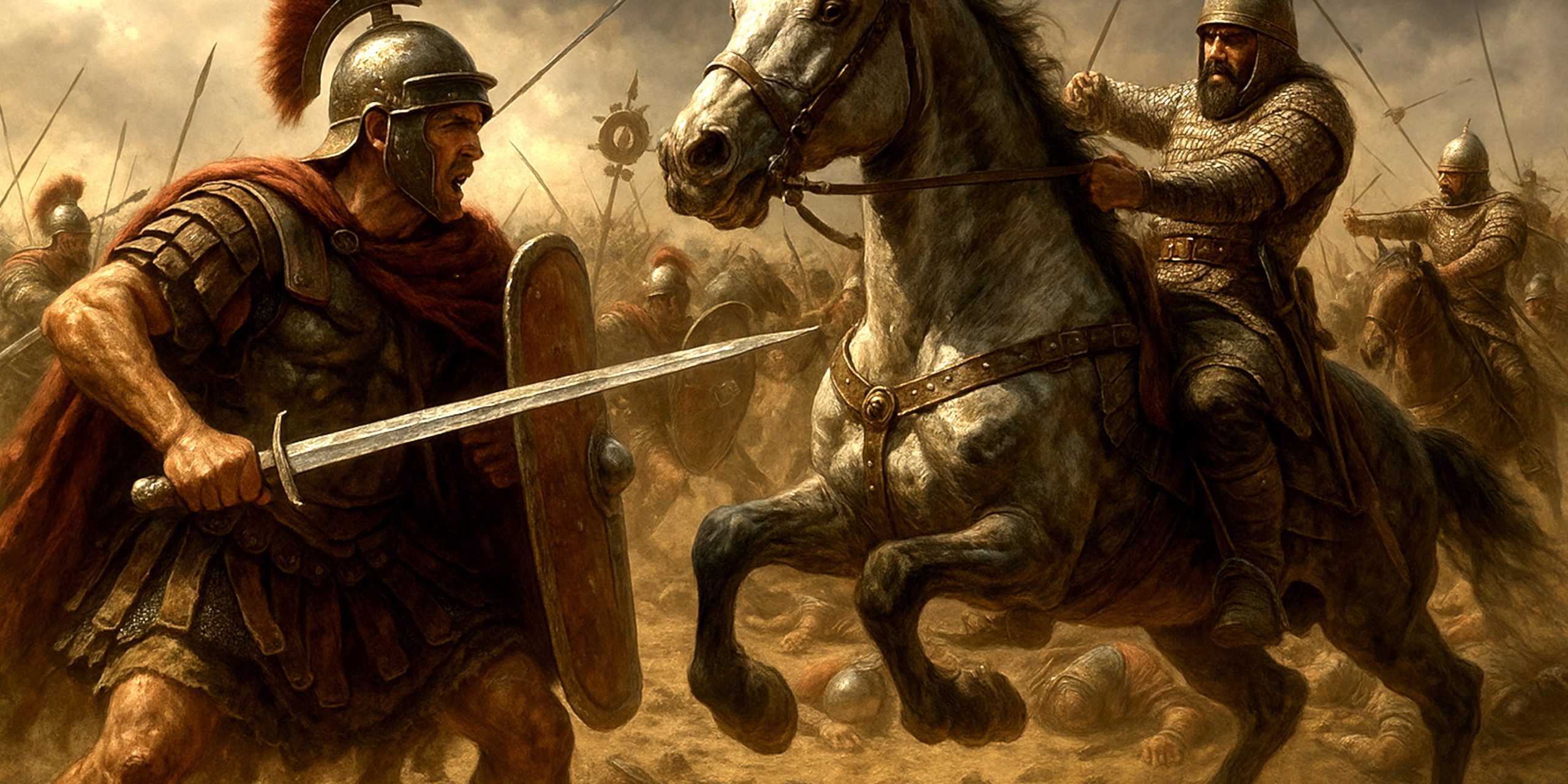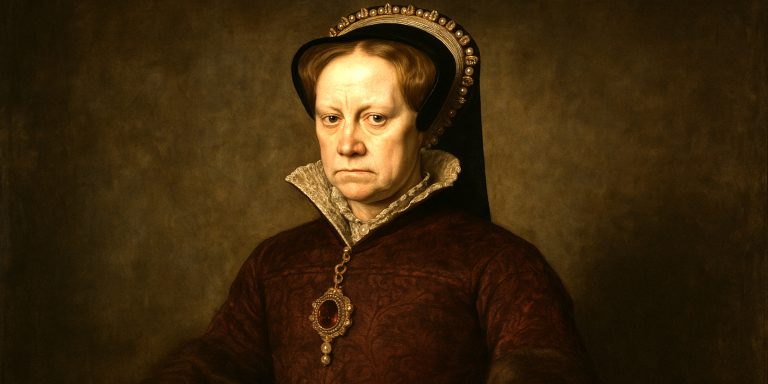
The battleof Edessa has a habit of being overshadowed by more glamorous clashes, yet it remains one of those moments where you can almost feel the ground shift under late Roman history. In 260, Valerian marched east to steady an empire buckling under pressure, only to meet Shapur I near Edessa. What followed was a catastrophe that Roman writers struggled to process, and for good reason. A Roman emperor was taken alive. No heroic last stand, no neat exit, just humiliation in full view of two civilisations that already did not care for each other.
I have always found the battle oddly compelling. You can sense the despair in later accounts, and the Persians knew perfectly well what they had achieved. The failure at Edessa opened cracks that would shape the empire for years, and the shockwave reached from the desert frontier to the Senate steps.
Background
Tensions between Rome and the Sassanian Empire had simmered for decades. Shapur I had already taken advantage of Roman instability and pressed hard into Syria and Mesopotamia. Valerian, hoping to restore order and a little Roman self-respect, marched east with an army that looked respectable on parchment but was weakened by plague, supply issues, and questionable leadership. One does feel slightly sorry for them, but only slightly.
Forces
Table, Forces At Edessa
| Side | Estimated Strength | Notes |
|---|---|---|
| Roman Empire | 60,000 to 70,000 | Composite army drawn from legions, auxiliaries, and eastern levies, weakened by disease |
| Sassanian Empire | 40,000 to 50,000 | Elite cavalry core with armoured horsemen, mobile archers, and siege specialists |
Leaders
Roman Leadership
- Emperor Valerian, commander-in-chief, experienced but aging and weakened by illness.
- Successor officers, rarely named in sources, struggled to hold discipline among tired troops.
Sassanian Leadership
- Shapur I, one of the most capable rulers of the dynasty.
- Elite cavalry commanders, responsible for flanking manoeuvres and trap formations.
Arms And Armour
A historian can only admire the mixture of late imperial Roman kit facing the highly specialised Sassanian cavalry. It is a contrast of systems, one fraying at the edges, the other rising with unsettling energy.
Roman Equipment
Infantry
- Spatha swords, especially late-pattern cavalry spathae adopted widely by legions.
- Oval and rectangular shields.
- Mail or scale cuirasses.
- Heavy javelins and throwing darts.
- Helmets of the ridge and Intercisa patterns.
Cavalry
- Longer spathae with straight double-edged blades.
- Light lances.
- Mixed armour including mail, scale, and some plate components.
Sassanian Equipment
Cavalry
- Long straight swords comparable to the shamshir’s ancestors, although not yet curved.
- Kontos style two-handed lances.
- Lamellar and scale armour for horse and rider.
- Composite bows with high draw strength, the bane of slow Roman movement.
Infantry
- Shorter straight swords.
- Spears and stout shields.
- Quilted or scale armour depending on unit prestige.
Table, Leaders And Troop Composition
| Leader | Core Units | Notes |
|---|---|---|
| Valerian | Legions, auxiliary infantry, Roman heavy cavalry, eastern levies | Army weakened by plague, morale poor |
| Shapur I | Cataphracts, armoured horse archers, elite guards, infantry with bows and spears | Highly mobile and tactically flexible |
The Battle
Valerian seems to have believed he could pin the Sassanian army against the terrain near Edessa. Unfortunately for him, Shapur understood mobility far better. Sassanian horse archers pressed the Roman line, withdrawing and circling while poisoned by the Roman supply crisis.
Once Roman cohesion began to buckle, Shapur unleashed his armoured cavalry in a fast hammer blow that split the legions. Roman retreat lines were cut, command collapsed, and Valerian attempted negotiations which resulted, tragically, in him being seized.
No amount of later Roman propaganda could quite tidy that up.
Contemporary Quotes
Shapur’s own inscription at Naqsh-e Rustam offers the most confident voice:
“We captured Valerian with our own hands, and the army that was with him, and we brought them into Persia.”
A short line, sharp enough to sting centuries later.
Lactantius, writing with Christian zeal, adds his own flourish:
“He came into the hands of the Persians, and lived a long time in disgraceful slavery.”
One senses he enjoyed writing that.
Archaeology
Archaeological remains around Edessa show little in the way of clear battle strata, which is not surprising given urban development and shifting settlement layers. However, Sassanian rock reliefs at Naqsh-e Rustam depicting a kneeling figure, widely understood to be Valerian, confirm the symbolic importance of the victory to Shapur’s dynasty.
Roman coinage after 260 shows abrupt tonal change, with the empire fragmenting into the Gallic Empire and Palmyrene breakaways. Material finds from these successor states illustrate how destabilising Edessa proved to be.
Battle Timeline
Before 260
- Repeated Sassanian incursions into Roman territory.
- Valerian assembles an eastern field army.
Early 260
- Roman force plagued by disease.
- Shapur manoeuvres near Edessa.
Mid 260
- Roman army attempts engagement.
- Sassanian cavalry skirmish and wear down Roman formations.
Climactic Phase
- Shapur orders full cavalry charge.
- Roman line collapses.
- Valerian captured during attempted negotiations.
Aftermath
- Roman eastern frontier collapses.
- Palmyra rises under Odaenathus to counterbalance Sassanian pressure.
- Edessa becomes one of the defining disasters of the third century crisis.
Legacy
The Battle of Edessa stands as one of Rome’s great disasters, comparable to Carrhae and Teutoburg. It marked the low point of imperial authority during the crisis and forced regional powers like Palmyra to step into the vacuum. For the Sassanian Empire, it was a moment of unmatched prestige, immortalised in stone and in Shapur’s confident inscriptions.
If one wanted a case study in how not to conduct a campaign, Edessa is painfully rich in material.
Watch the documentary:



